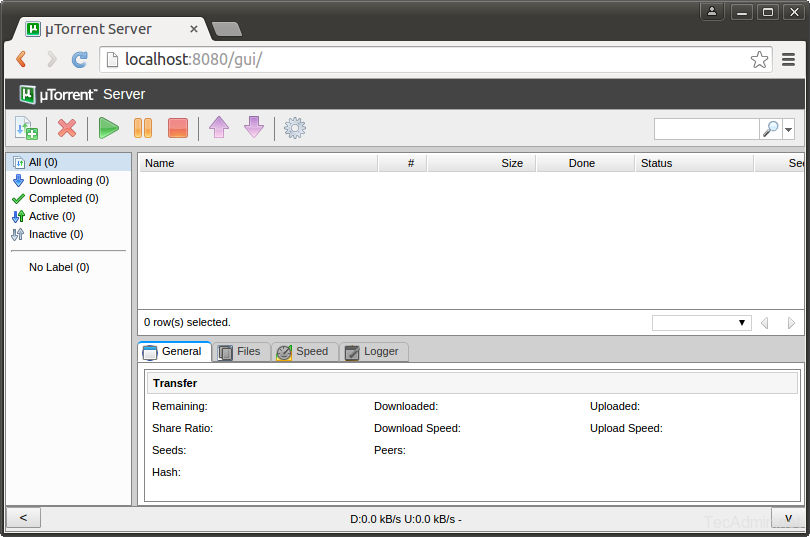Download Debian Server

I talk a great deal about using Ubuntu Server as your platform of choice for many a data center need. That particular operating system isn't the only option. In fact, there's always the OS Ubuntu is based on. That's right, I'm talking about Debian.
Debian is an ideal operating system that can easily meet your data center needs. Jack Wallen walks you through the process of setting up a minimal Debian server. I talk a great deal about using. In this guide, we will walk you through the installation of a Debian 9 (Stretch) Minimal Server, using the netinstall CD ISO image.This installation you will carry out is appropriate for building a future customizable server platform, without a GUI (Graphical User Interface).
Debian is a rock solid Linux distribution that offers a similar level of user-friendliness found in Ubuntu. I want to walk you through the process of installing a minimal server installation of this particular platform. There are quite a few more steps than found in a similar Ubuntu Server installation; that being said, the installation isn't terribly challenging.
Instead of using the normal Debian Stretch ISO image, we'll be working with the Debian netinstall image. This includes a minimal amount of packages, so you can then install precisely what you want.
Because there are so many steps, I will only show screenshots of those that are important to this particular setup. All others, I will simply mention.
What you'll need
I will be demonstrating the Debian minimal installation by way of a VirtualBox VM. If you plan on running this installation on dedicated hardware, you'll need said hardware, as well as the means to boot into the Debian installer. This can be done by either burning the ISO onto a CD or DVD, or creating a bootable USB drive (with the help of, say, Unetbootin, or Multiboot USB).
See: How to create a bootable USB drive with multiple Linux distributions

Once you have everything necessary, either boot up your virtual machine or your hardware, and start with the installation.
The installation
The first screen you will see (Figure A), requires you to select an installation type. I'm going to go with the non-graphical option (choose Install).
Figure A
The next two screens require you to select a location and keyboard. Since this is a curses-based installation, make your selection with the cursor keys on your keyboard, tab down to select Continue, and hit Enter on your keyboard. Make these choices, based on your needs, and continue on.
Next we have to configure the hostname and domain name. These are done on two different screens. The domain does not have to be an FDQN. Windows themes for windows 8.1. If you're installing this for testing or internal purposes, the domain (Figure B) could be something like debianvm.lan.
Figure B
The next screens require you to set a root user password, and then create a new user. Following that, configure your timezone.
It's now time to partition the disk. Fortunately, Debian includes an autopartioner, so you can select one of the three different 'Guided' choices (Figure C).
Figure C
The next screens require you to:
- Select the disk to be partitioned.
- Select the partition scheme (all files in one partition, separate /home partition, or separate /home, /var/, and /tmp partitions).
- Write changes to disk
The next screen is only found in the netinstall. The installer will have scanned the entire installation media, and then ask if you want to scan another CD or DVD (Figure D). Tab to No and hit Enter.
Figure D
Now we're going to configure the package manager. The first screen asks you to select a country for the mirror. Select your country and then the mirror for your country (such as ftp.us.debian.org) from the list. In the next screen, configure a proxy (if applicable).
You will then be asked if you want to participate in a user survey. You can tab to No and hit Enter on your keyboard to bypass this.
Finally we reach the package selection section (Figure E). Using the cursor keys, navigate to the packages you want to install and tap the spacebar to select.
Figure E
As I am only installing a minimal web and SSH server, I will unselect the desktop environment, select web server and SSH server, and tab to continue. When the packages finish installing, which won't take much time, you then must configure the GRUB boot loader. Select Yes for installing the bootloader (Figure F), and then in the next screen, configure where the bootloader should live.
Figure F
Once the bootloader is installed, you'll be prompted for reboot and your installation is complete. You can now log into your Debian minimal server and begin developing it to perfectly suit your needs.
An outstanding platform
When deciding on a platform to be used in your data center, you'd be remiss in not considering Debian. This outstanding open source operating system is very stable, robust, and ready to serve. Give it a try and see if it doesn't fit in perfectly with your data center.
Data Center Trends Newsletter
DevOps, virtualization, the hybrid cloud, storage, and operational efficiency are just some of the data center topics we'll highlight. Delivered Mondays and Wednesdays
Debian Server Iso
Sign up today Sign up todayDownload Debian Server 6 Iso
Also See
Debian 7 Download
- How to send messages to users logged into your Linux machines (TechRepublic)
- How to install Kloxo-Mr hosting control panel on CentOS (TechRepublic)
- How to install and use the smem memory reporting tool in Linux (TechRepublic)
- How to use syslog-ng to collect logs from remote Linux machines (TechRepublic)
- How to install and use Dockstation for easy container builds (TechRepublic)
- Google moves to Debian for in-house Linux desktop (ZDNet)